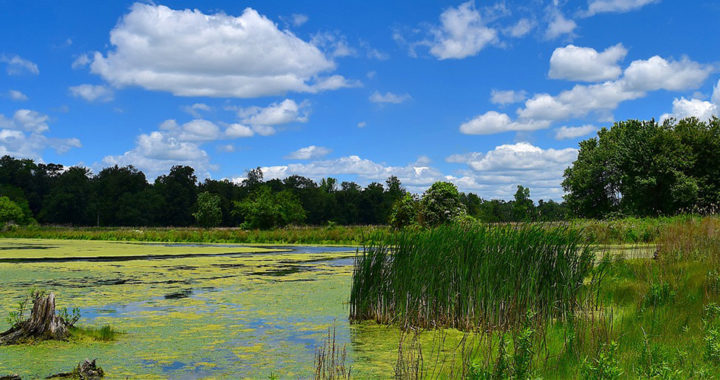Algal bloom or algae bloom is a phenomenon characterized by a rapid increase in the population of algae in marine and freshwater ecosystems. Furthermore, this increase in population is evident from the discoloration in water from algal pigments. Nonetheless, some instances of algal blooms are harmless, while others called harmful algal blooms can present problems for ecosystems and human communities.
The Causes of Harmful Algal Blooms
Take note that there is no officially accepted threshold level that defines a bloom because algae is a broad term for organisms with different growth rates and nutrient requirements, as well as varying sizes. Nonetheless, there major known causes of algal bloom, as well as harmful algal blooms.
Excess nutrients such as phosphates in freshwater and nitrogen in saltwater due to nutrient pollution and eutrophication promote the rapid growth of algal population. Some instances of eutrophication are natural. However, most cases are caused by human activities.
The specific causes of human-induced eutrophication and thus, the specific causes of bloom are runoffs from agriculture and development, as well as contamination from wastewater sources such as septic tanks, sewer systems, and sewage sludge.
Heat resulting from seasonal changes in weather patterns also promotes the rapid growth of algae population. Higher water temperature essentially creates a conducive environment for algal species to thrive and grow.
There are different and more specific factors that can increase the temperature in aquatic ecosystems. These include thermal pollution from power plants and factories, low water levels in inland bodies of water, and extreme weather condition due to climate change.
The Effects of Harmful Algal Blooms
It is important to highlight the fact that some instances of algal bloom are harmless. However, there are cases that bring forth serious problems for ecosystems and human communities. These are called harmful algal blooms or HABs.
One of the effects of HABs is the production of neurotoxins that harm several organisms such as fishes, marine mammals, sea turtles, and seabirds. These toxins harmfully affect their developmental immunological, neurological, or reproductive capacities.
There have been recorded HAB events that cause mass mortality. In 2004, for example, 107 bottlenose dolphins in Florida died due to the consumption of fish contaminated with high levels of brevetoxins produced by a dinoflagellate species.
Consumption of seafood contaminated by neurotoxins from algal blooms is also dangerous to humans. Hence, during blooms such as instances of red tides, the governments often regulate the distribution and consumption of these contaminated aquatic species.
Oxygen depletion from cellular respiration and bacterial degradation is another effect of algal bloom. Dense blooms also block sunlight. Both phenomena result in mass mortalities of aquatic species and dead zones in the aquatic ecosystem.
Harmful blooms can also negatively impact the economy. Communities dependent on fishing activities and tourism are naturally affected by HABs. Note that aside from toxins and dead zones, a high density of algal species can physically injure aquatic species.
Summary of the Causes and Effects
Below are the causes of harmful algal blooms:
• Excess nutrients such as phosphates in freshwater and nitrogen in saltwater due to nutrient pollution and eutrophication
• Specific causes of human-induced eutrophication are runoffs from agriculture and development, as well as contamination from wastewater sources
• Higher water temperature also creates a conducive environment for algal species to thrive and grow, thus increasing their population
• Specific factors that can increase water temperature include thermal pollution from industrial activities, low water levels, and extreme weather condition
Below are the effects of harmful algal blooms:
• Particular instances of blooms called harmful algal blooms or HABs are destructive to the ecosystems and human communities
• HABs can either or both result in the production and release of harmful toxins in the environment and the proliferation of high biomass producers
• Neurotoxins produced by certain algal species harm several organisms such as fishes, marine mammals, sea turtles, and seabirds
• Consumption of aquatic species contaminated by neurotoxins from algal species is also dangerous to humans.
• Oxygen depletion from cellular respiration and bacterial degradation and the blockage of sunlight are another effect of HABs
• Harmful blooms can also negatively impact the economies of communities dependent on fishing and tourism activities
FURTHER READINGS AND REFERENCES
- Flewelling, L. J. 2005. “Red Tides and Marine Mammal Mortalities.” Nature. 435: 755-756. DOI: 10.1038/nature435755a
- Townhill, B. L., Tinker, J., Jones, M., Pitois, S., Creach, V., Simpson, S. D., Dye, S., Bear, E., and Pinnegar, J. K. 2018. “Harmful Algal Blooms and Climate Change: Exploring Future Distribution Changes.” ICES Journal of Marine Science. 75(6): 1882-1893. DOI: 10.1093/icesjms/fsy113
- U.S. Environmental Protection Agency. n.d. “Harmful Algal Blooms.” Nutrient Pollution. U.S. Environmental Protection Agency. Available online





